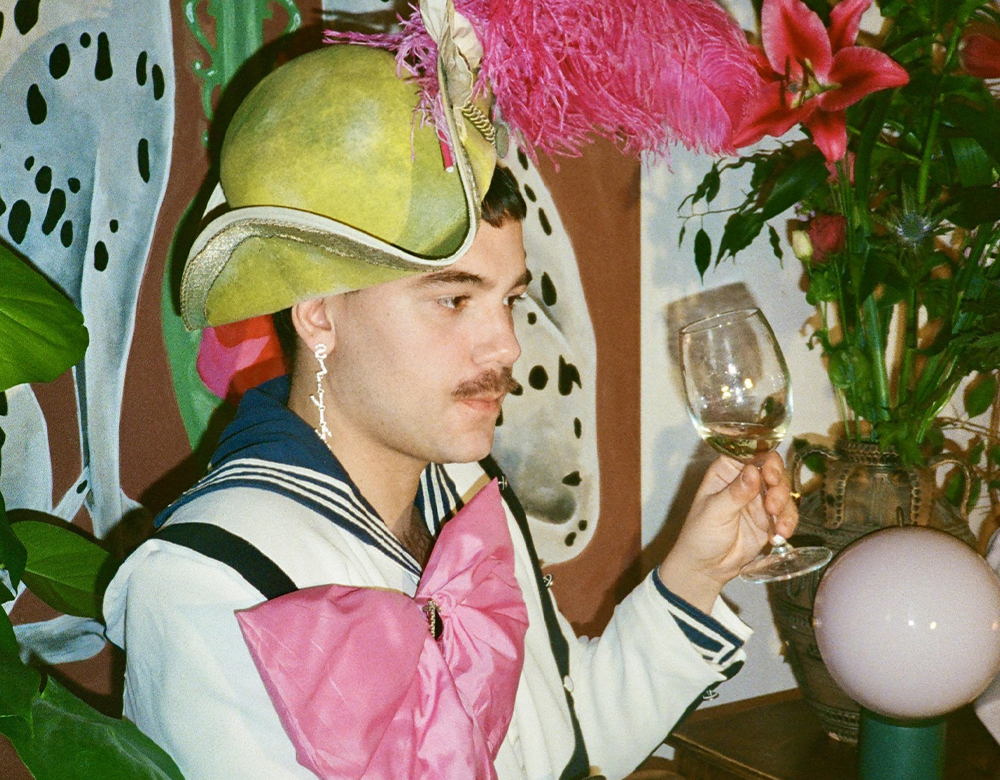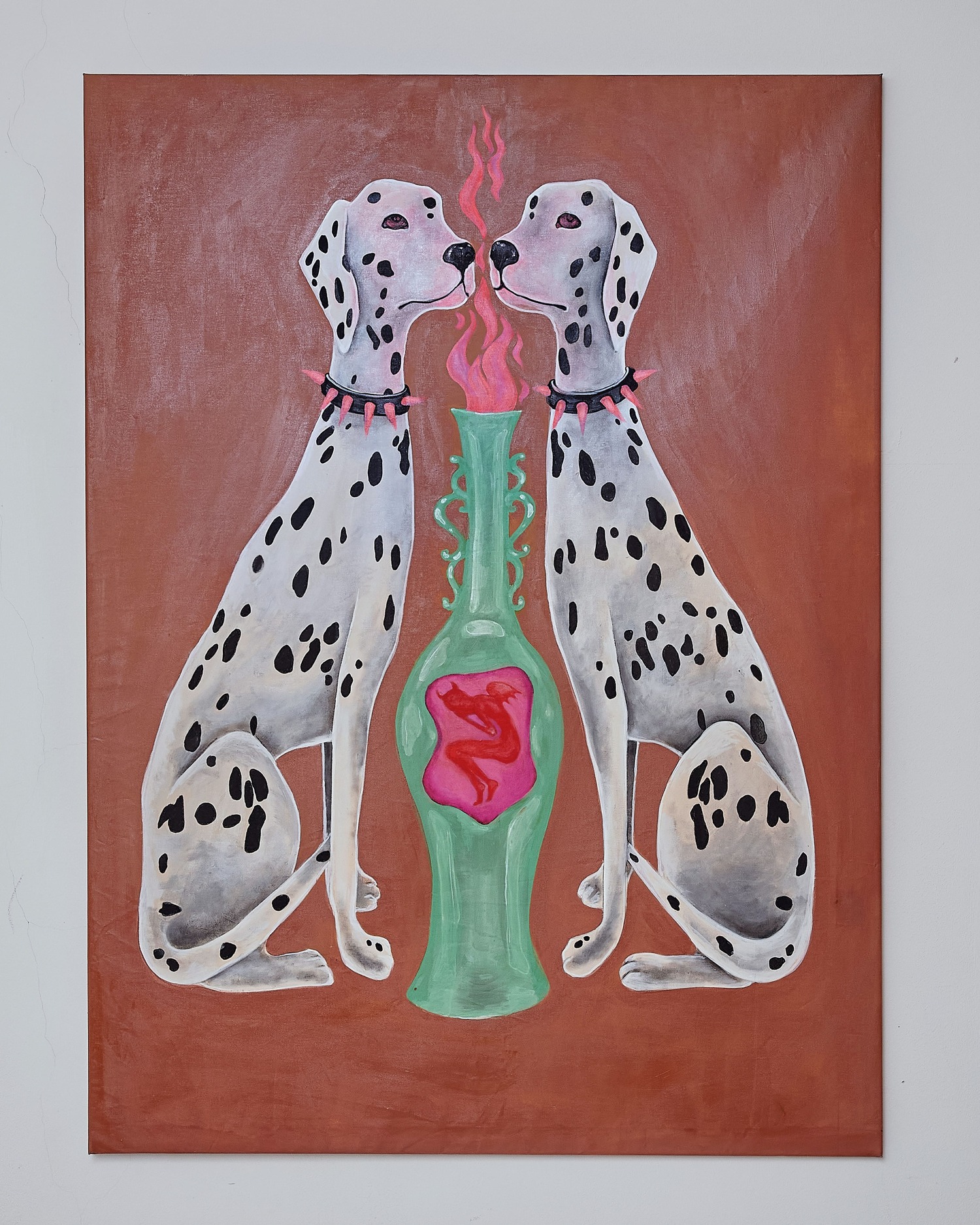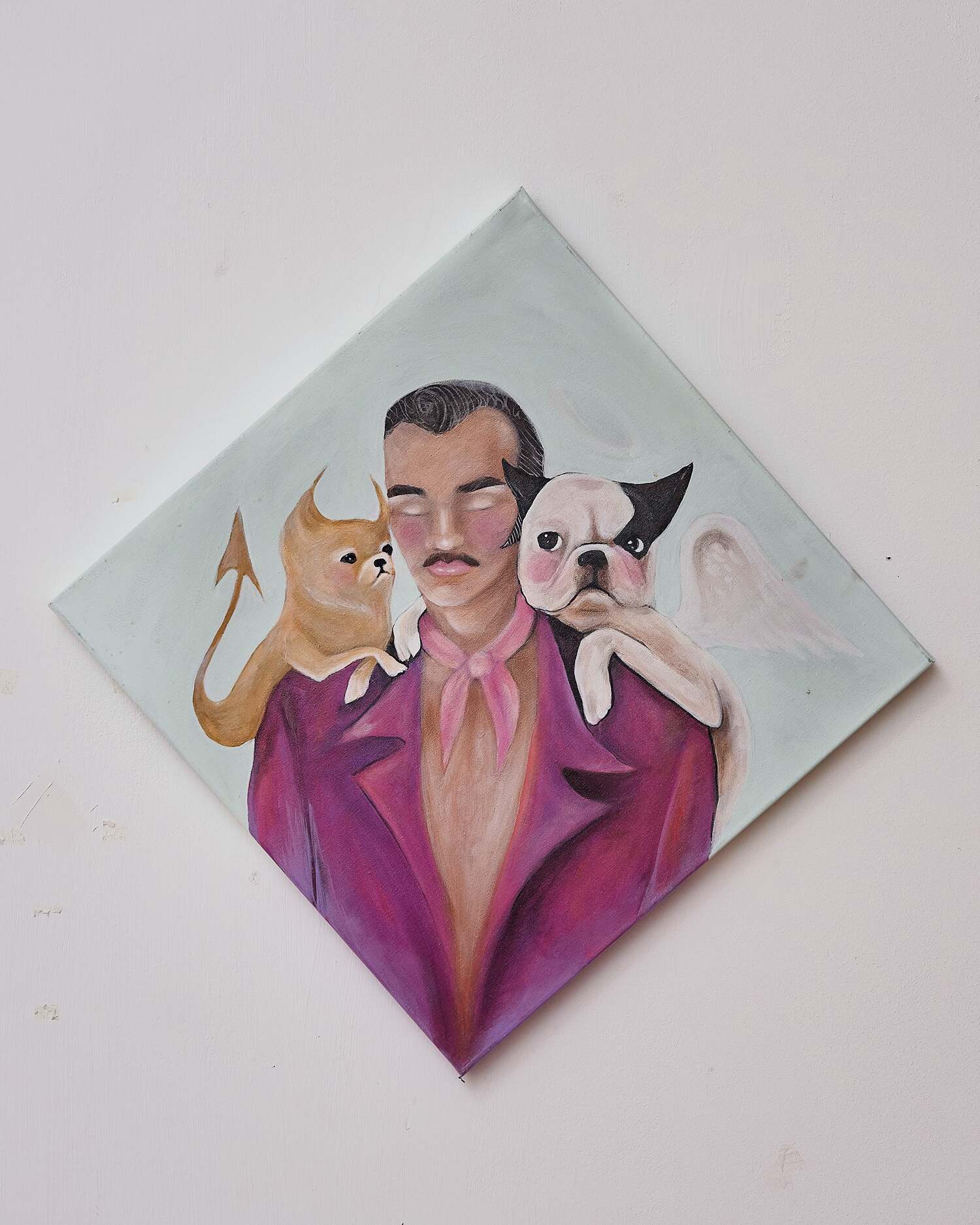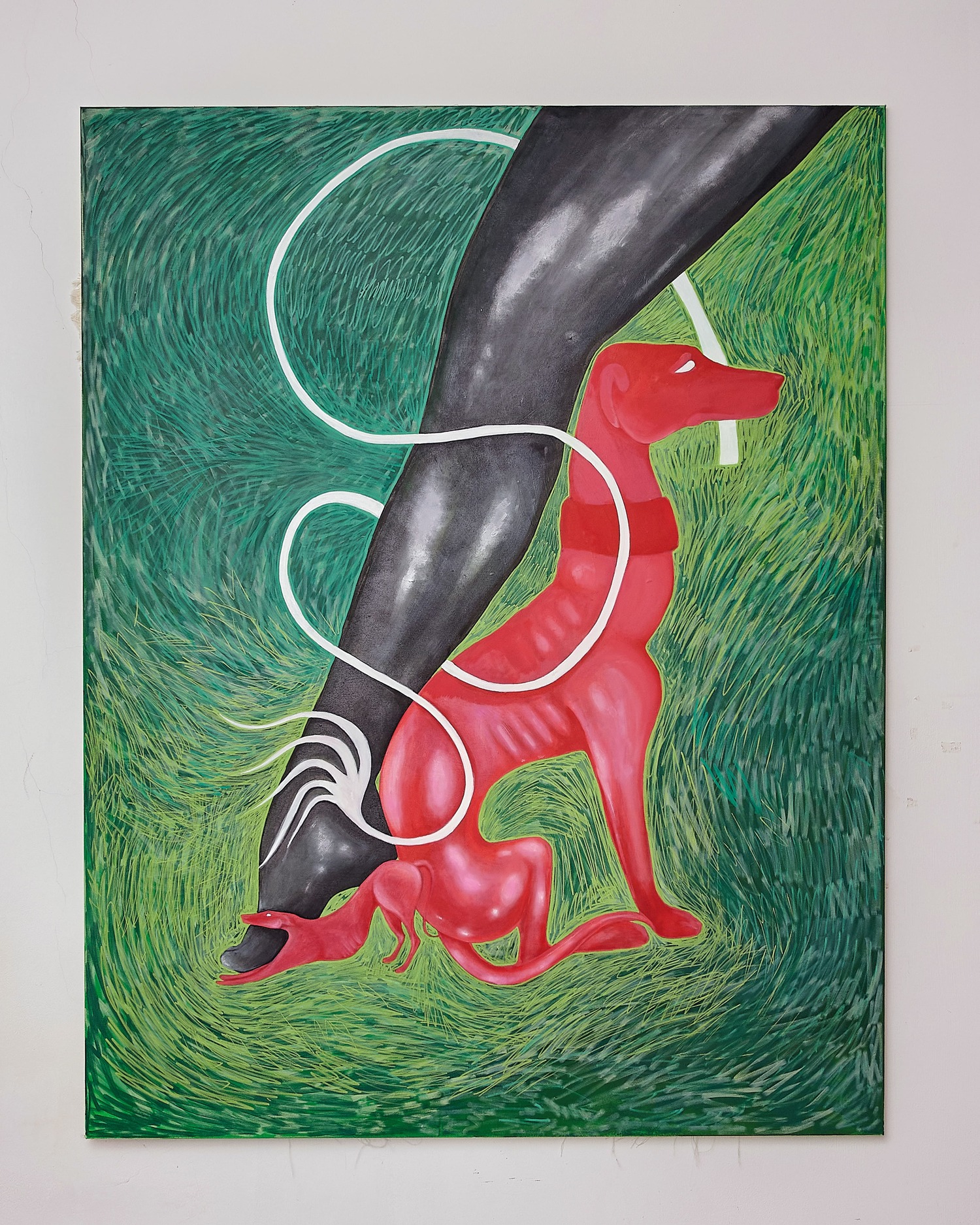Jovan Glusica
Year of birth: 1995
Where do you live: Vienna, Austria
Your education: Academy of Fine Arts Vienna
Describe your art in three words: Grotesque Parody of Taste.
Instagram

Your work merges fine art, scenography, and fashion. How do these disciplines influence one another in your practice?
The connection between my practices allows me to explore storytelling and world-building on another level. In scenography, I learned to think about space and atmosphere, how an environment can emote drama. This translates into my art, because compositions often feel like a stage. Fashion, on the other hand, brings a tactile, wearable dimension to my work. It challenges me to consider how art envelopes the body, creating a dialogue between personal identity and the public gaze.
Could you tell us more about your transition from studying Stage Design in Serbia to pursuing Contextual Painting at the Academy of Fine Arts in Vienna?
The shift from stage design to contextual painting was both natural and transformative. In Serbia, stage design taught me to focus on constructing narratives and visualizing abstract ideas in three dimensions. When I moved to Vienna, the Academy of Fine Arts offered me the freedom to expand on those ideas. Contextual painting encouraged me to consider how art interacts with its surroundings. be it societal, historical, or cultural contexts. It was a process of unlearning some constraints while finding new ways to infuse storytelling into my visual language.

How does your cultural background in Serbia influence your creative process and artistic expression today?
Growing up in Serbia, a region rich with history, folklore, and resilience, deeply shaped my artistic voice. There’s a duality in my work, balancing the weight of tradition with the drive for contemporary expression. The cultural symbols and stories I was surrounded by often emerge in my pieces, reinterpreted through a modern lens. My background also instilled a sense of resourcefulness, which influences how I approach challenges in both art and life.
Your work features unique symbolism and vivid imagery. Can you explain the significance behind some of the recurring motifs in your pieces?
Many of the recurring motifs in my work are rooted in personal experiences and universal archetypes. For instance, I often feature animals like birds and dogs. Birds are a nod to my father, who was passionate about racing pigeons, a hobby I couldn’t stand as a child but have come to deeply appreciate as an adult. I’m now a big advocate for pigeon rights because they’re such remarkable, beautiful creatures.
Dogs, on the other hand, serve as allegories for societal archetypes and, at times, even as self-portraits.
The vivid colors and dreamlike compositions reflect my desire to blur the line between reality and imagination, inviting viewers to emotionally connect with the work in their own way.
Can you share a particular moment or event in your life that has deeply impacted your artwork?
Honestly, there’s many moments I could mention now, but I think existing in today’s world is plenty inspirational.
What do you hope viewers take away from experiencing your artwork?
The interplay of beauty, glamour, and violence in my work. I’m fascinated by how these elements coexist. How something beautiful can carry an undercurrent of tension or unease. The allure of what’s polished and perfect versus the raw, sometimes brutal reality underneath.
How do you approach collaboration with other creatives, particularly in the fields of fashion or theater?
Collaboration is an exciting way to expand my practice and explore ideas I wouldn’t have considered alone. I would say that people who need people are the luckiest people in the world. Don’t you think? I approach every collaboration with curiosity and respect, always seeking to find the balance between my vision and the collective goal.



Leave a Reply